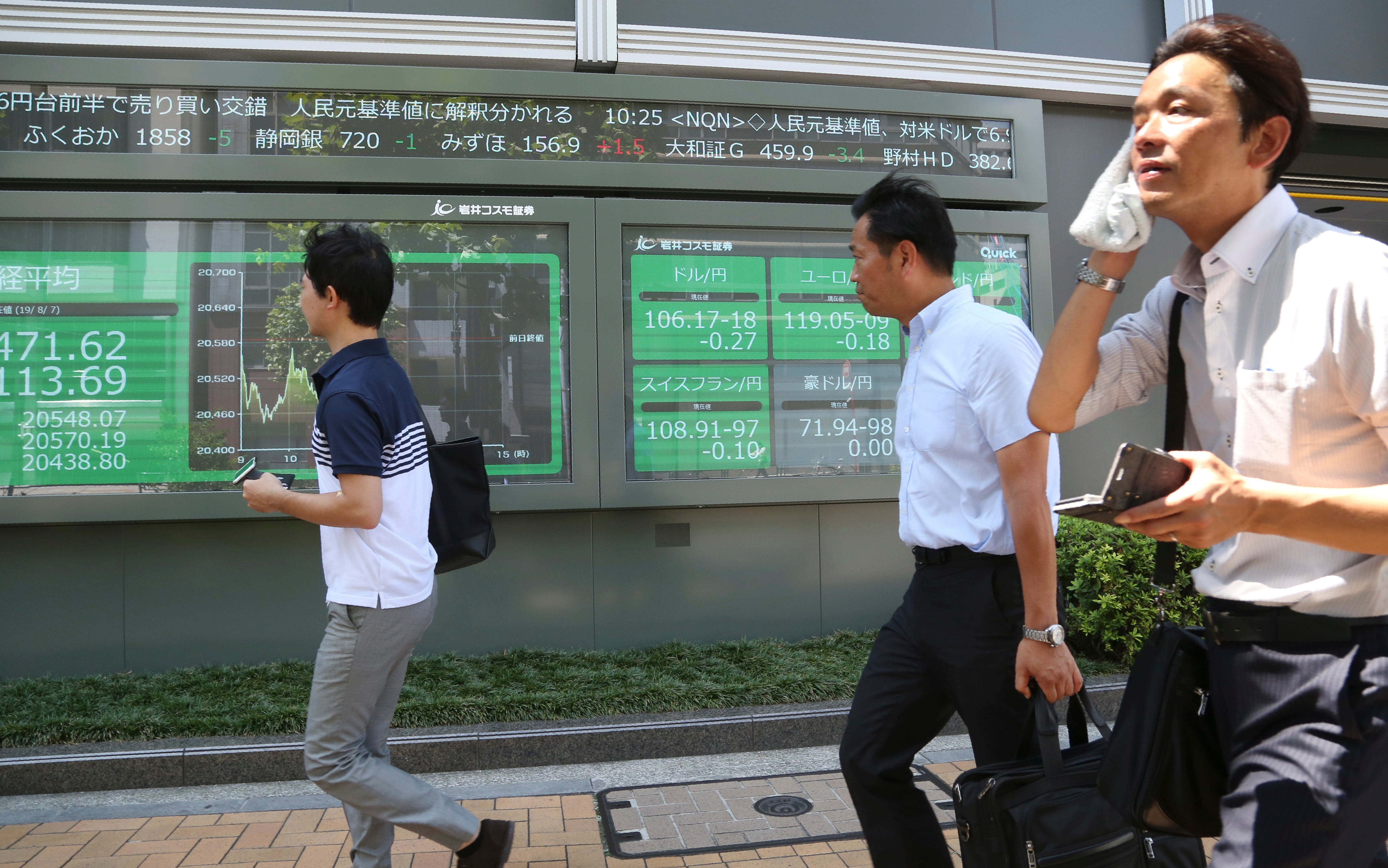LATEST FINANCIAL NEWS
Dow ends lower, while S&P 500 and Nasdaq turn positive
[ad_1]
The Dow was down, but the S&P 500 and the Nasdaq ended up.
Stocks closed on Wednesday mixed as investors second-guessed their initial concerns about a global slowdown and heightened trade fears with China.
The Dow Jones industrial average ended down 22 points, or 0.09%, at 26,007, while the Standard & Poor’s 500 gained 2 points, or 0.08%, to close at nearly 2,884. The tech-heavy Nasdaq added almost 30 points, or 0.38%, to finish at 7,862 on Wednesday.
“The market is looking for some reason to go up or down,” said Doug King, president and CEO of Prosperity Capital Advisors LLC in Westlake, Ohio. “We’re in an unprecedented bull market at all-time highs and it wants to go higher. But because everyone is expecting a pullback, any spook will create a negative reaction and that’s the volatility you see,” he said.
Earlier, the Dow had lost 2% as risk-averse traders – worried about a slowing economy based on news overseas – poured money into bonds as a safer investment. The yield on the 30-year Treasury bond had also neared its record low of 2.0882% reached in July 2016.
Overnight, central banks in New Zealand, India and Thailand all cut rates, taking traders by surprise. Industrial production in Germany recorded the largest drop in nearly a decade, further compounding recession fears.
55% of Americans want a side hustle: Here’s how to start
Democrats or Republicans: Which party has the best plan to fix Social Security?
“I think that signaled a slowing economy and unsettled equities investors,” said Wayne Wicker, chief investment officer of Vantagepoint Investment Advisers, LLC. “On any given day, [stocks] are quick to move on the news flow, which has been exacerbated by the trade negotiations.”
All three major indexes had their worse rout of the year on Monday after China allowed its currency to fall to a politically sensitive level against the U.S. dollar and said it would halt purchases of all U.S. agricultural goods.
The country said it was in response to “trade protectionism,” ostensibly fingering a new trade threat President Trump made last week. He vowed to enact 10% tariffs on the remaining $300 billion in Chinese imports, goods that would more directly hit the American consumer in the wallet.
America should apply Cold War lesson: Compete hard, hold fast to our values
Longer term, the outlook for markets will depend on how the trade conflict between the United States and China plays out. Global investors have grown nervous lately about the possible impact that the trade war could have on the economy and corporate profits.
But China’s decision to allow its currency to stabilize Tuesday suggested Beijing might hold off from aggressively allowing the yuan to weaken as a way to respond to U.S. tariffs on Chinese goods.
“It’s too early to even try and associate this with any form of optimism given the events of the last week,” said Craig Erlam, senior market analyst at OANDA.
“There’s been a lot to digest and I wonder whether investors are simply taking a step back and doing just that.”
Wicker expects the market volatility to continue as the uncertainty surrounding trade and the direction of the global economy remains. But long-term investors, largely everyday Americans saving for retirement in their 401(k)s or other accounts, should tune out the wild swings.
“It’s really about time in the market and not timing the market that’s important,” Wicker said. “Jumping out may feel good in the short term, but you then need to make a second decision when to come back in.”
Contributing: The Associated Press
[ad_2]
Source link









